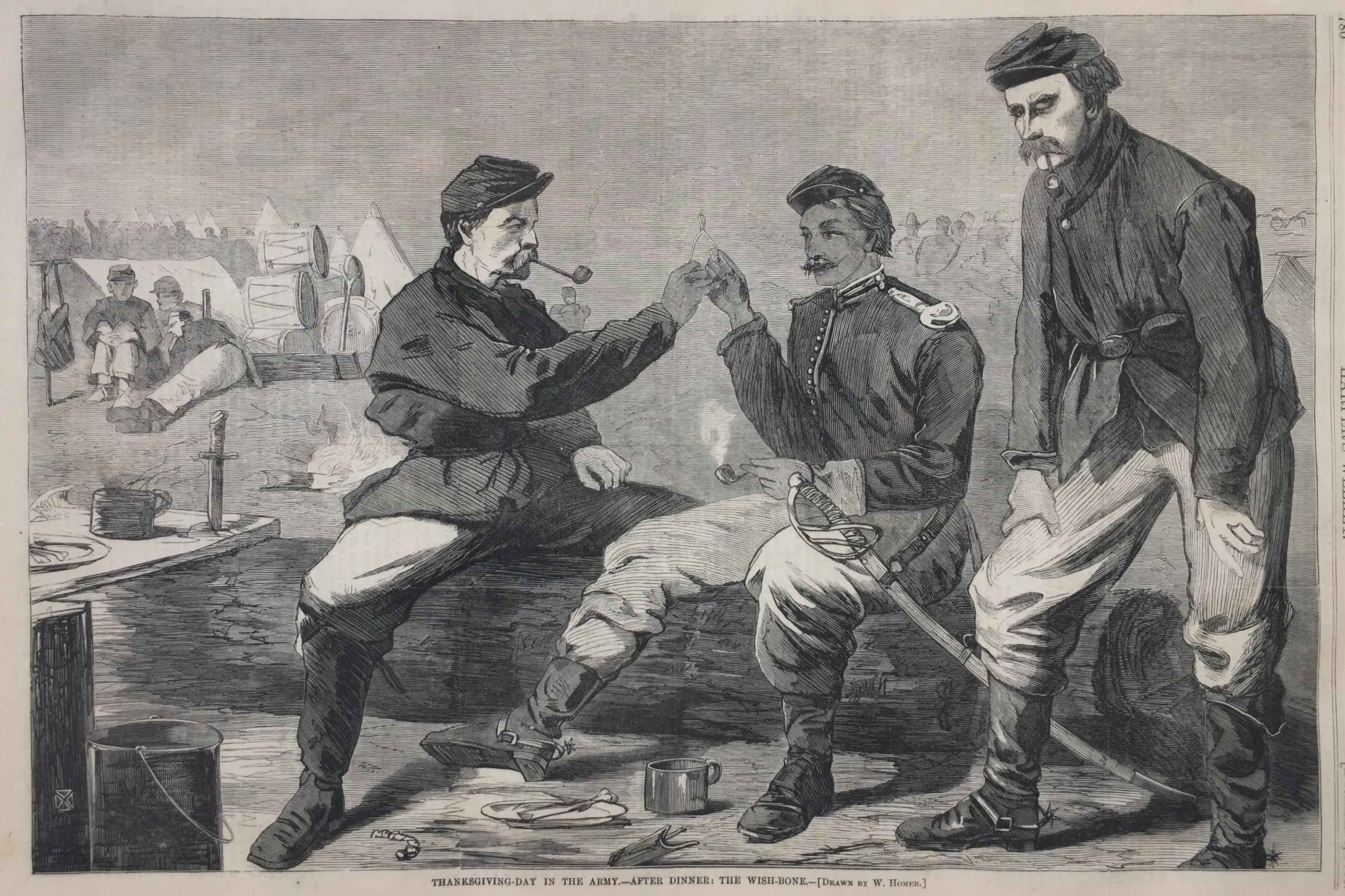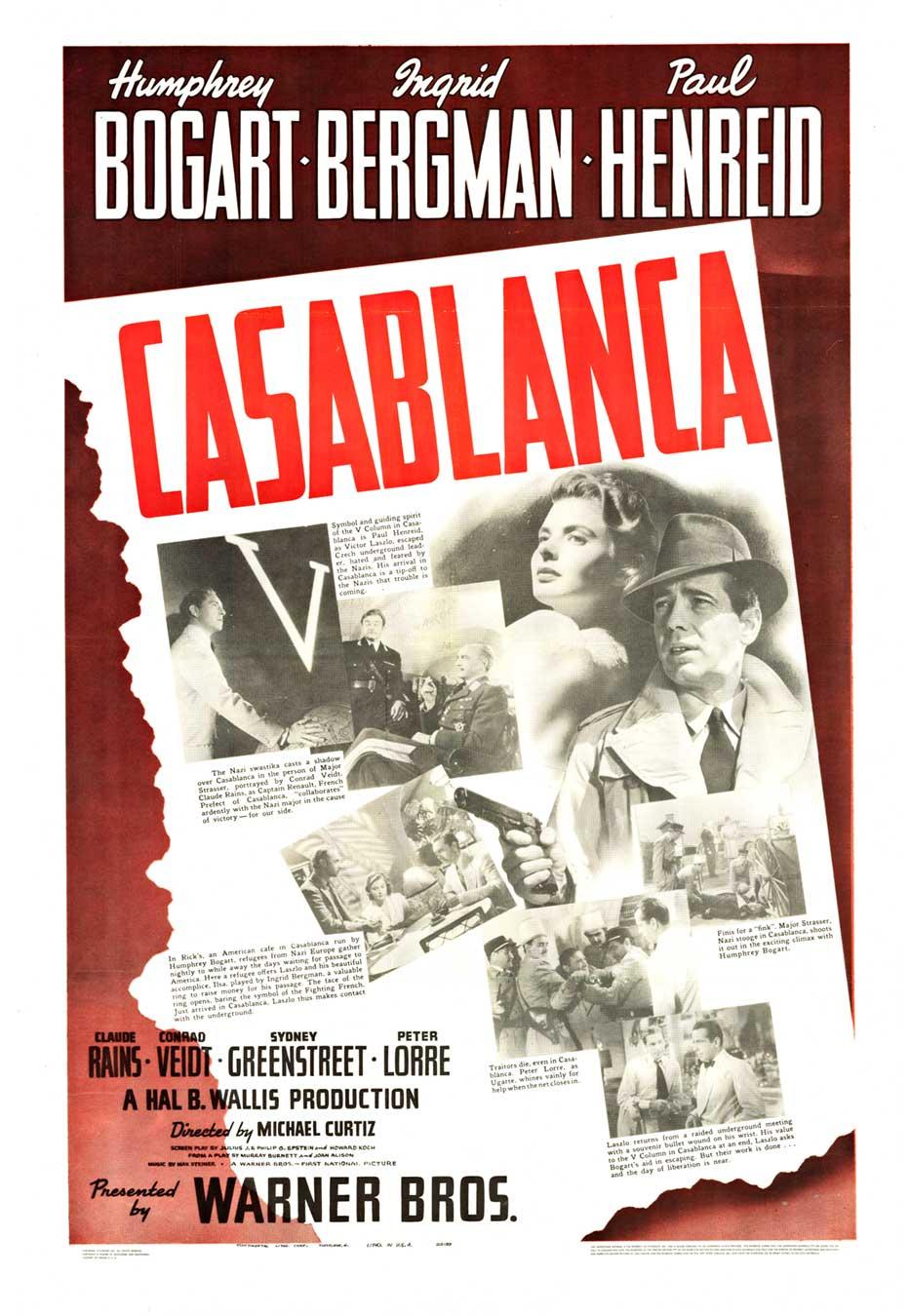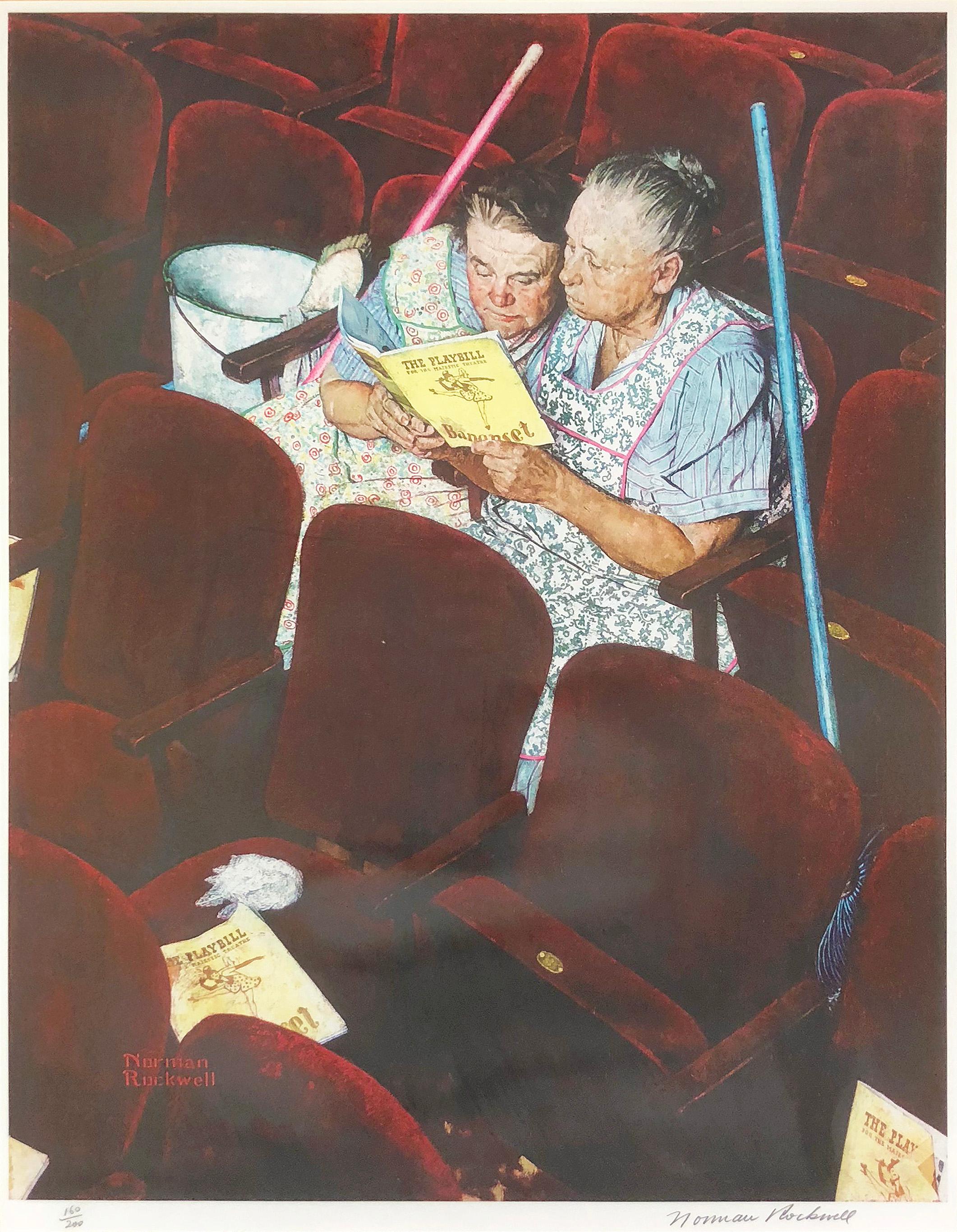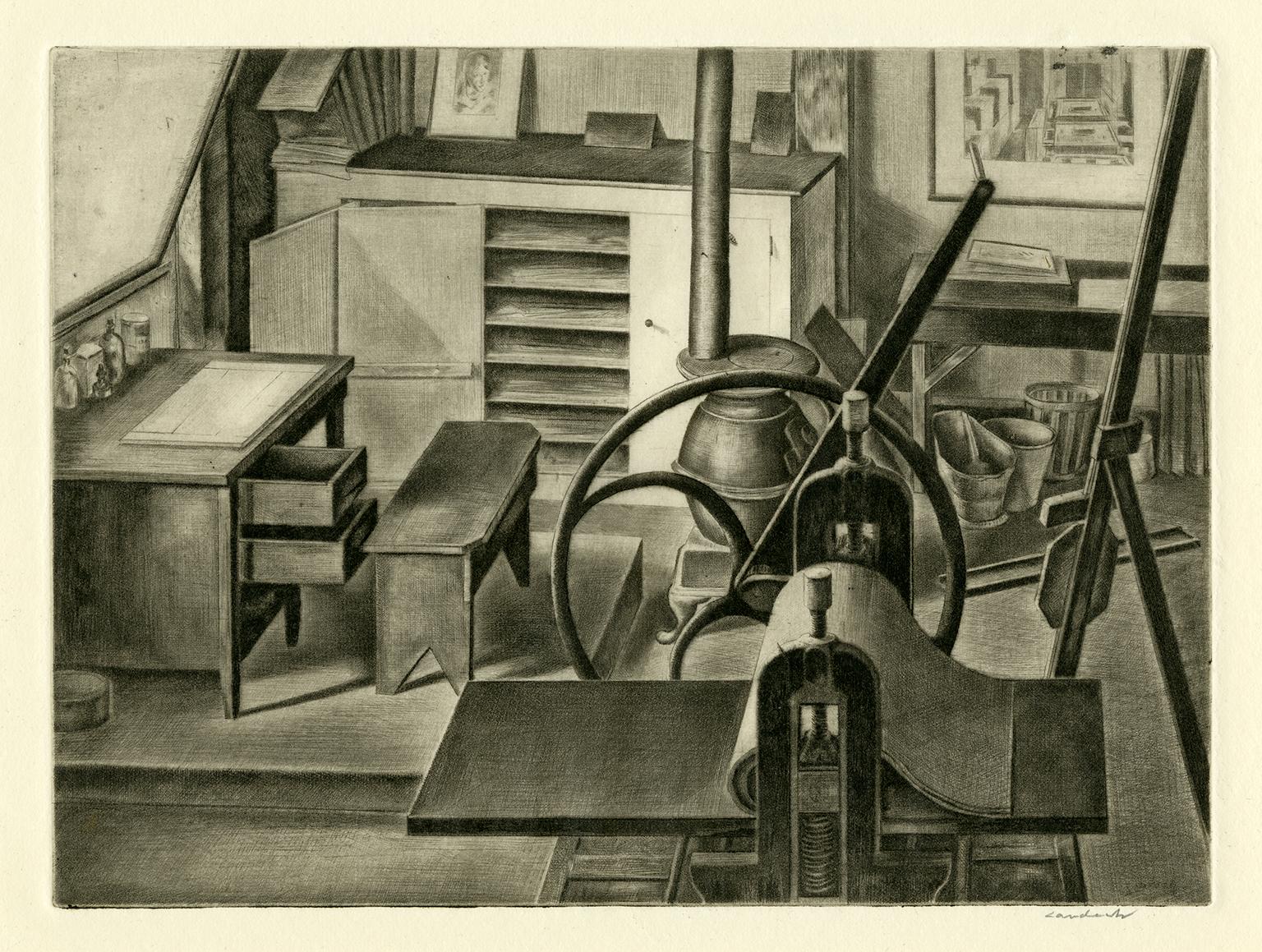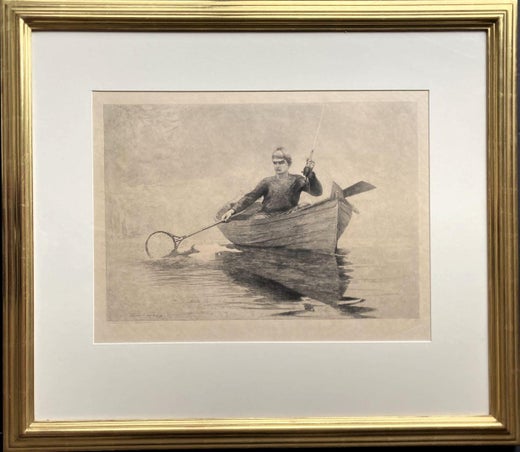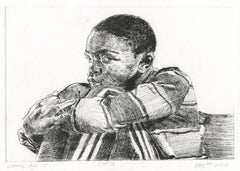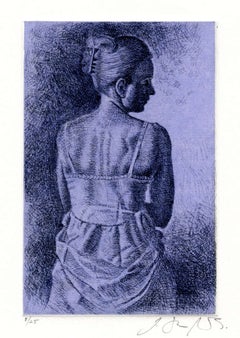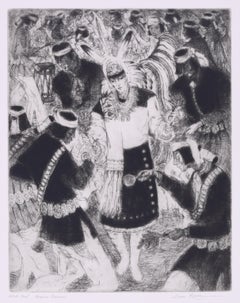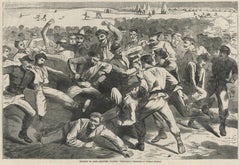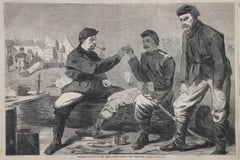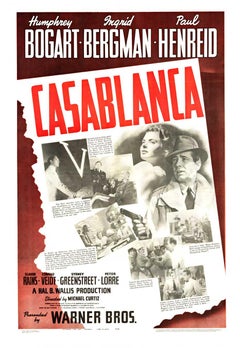Items Similar to The Bathers
Want more images or videos?
Request additional images or videos from the seller
1 of 10
Winslow HomerThe Bathers1873
1873
About the Item
The Bathers
Woodengraving, 1873
As published in Harper's Weekly, August 2, 1873 (p. 668)
Provenance:
Wunderlich & Co., Inc., New York, NY (Their stock no. 84.003.8 in pencil recto and verso)
Condition: Very good
Usual centerfold from the newspaper
aging to the paper (usual)
Image size: 13-7/8 x 9-1/4" (35.4 x 23.7 cm)
Sheet size: 15 7/8 x 11"
Reference: Beam 199
Goodrich 75
Kushner, Gallati & Ferber 71
"Winslow Homer’s wood engravings resulted from a collaborative process that involved many hands and transformed his designs into metal (electrotype) printing plates. To begin, Homer usually drew on a prepared, end-grain boxwood block—most often consisting of smaller pieces of wood bolted together. A team of professional wood engravers then incised the blocks.
Next, pictorial and text components were arranged into a page layout and a wax mold was made of the whole. This mold was coated with powdered graphite and placed in an electrically charged chemical bath together with plates of copper. The chemicals and electric current caused copper particles to form on the graphite coating, creating a precise metal replica of the page’s type and engraved images. This replica, reinforced with various metals, was then used to print the images we call wood engravings.
Courtesy The Clark
"Winslow Homer (1836-1910) was an American landscape, marine and genre artist. A master of oil painting and watercolor, he was also a gifted printmaker, illustrator and pictorial journalist. Born in Boston, the artist received no real formal training with the exception of some life-drawing classes at the National Gallery of Design and a stint studying painting with Frédéric Rondel in 1861. From 1859 until the mid-1870s, Homer worked as a commercial illustrator. During the Civil War, the artist gained international public recognition for his pictorial documentation of the battlefield commissioned by Harper's Weekly.
Post-war, Homer traveled first to Europe then returned to the States to establish a studio in New York City. There he began executing illustrations depicting vignettes from everyday life. The public embraced the authenticity of these portrayals as embodying the democratic spirit, considering them a visual similarity to the poetry of Walt Whitman at that time. Although popular and successful, in 1876 Homer abandoned commercial work, devoting attention to painting his vision of the American scene full-time.
Homer's subject matter included landscape and rural genre scenes, but he also found inspiration in the sea and traveled extensively to coastal locations - England, Cuba, the Caribbean, the Bahamas, Florida and Prouts Neck, Maine where he eventually would live out his life. His dramatic and forceful renderings of the Atlantic seascape remain unsurpassed and some of his most celebrated paintings. The Adirondack Mountains were an additional important destination. For 35 years the artist found inspiration for his work in the rugged terrain, the life of the outdoorsman and the natural beauty of the region.
In the last fifteen years of his life, Homer was revered as the nation's foremost painter. At the time of his death, Homer's work was represented in more public collections than any other living American artist. Considered by many to be 19th century America's most gifted artist, Homer's works are often viewed as embodying the beginnings of a truly "national" art that adopted the American experience as its subject matter. His ability to capture the spirit of America through images characterized by their directness, realism, subjectivity and color, resonate with the nation and hold a special position in the history of American art."
Courtesy: The Hyde Collection Museum, Glens Falls, NY
- Creator:Winslow Homer (1836 - 1910, American)
- Creation Year:1873
- Dimensions:Height: 15.875 in (40.33 cm)Width: 11 in (27.94 cm)
- Medium:
- Movement & Style:
- Period:
- Condition:Original.
- Gallery Location:Fairlawn, OH
- Reference Number:Seller: FA77281stDibs: LU14014912052
Winslow Homer
Winslow Homer (1836-1910) was an American landscape painter, printmaker and publication illustrator. He is considered one of the most important American artists of the 19th-century. Largely self-taught Homer initially worked as an illustrator for various publications, including: Harper's Weekly, Frank Leslie's Illustrated Newspaper and Ballou's Pictorial Magazine. He worked for Harper's during the Civil War, producing woodcut engravings depicting the personal experiences of soldiers. He later became a master of oil and watercolor painting, often focussing on maritime themes. Harper’s Weekly, published in New York, was an extremely popular publication in the nineteenth and early twentieth centuries. In weekly issues Harper’s reported the news, entertained with literature, poetry and art, as well as educating its readers about world affairs and new inventions. It's woodcut engraved illustrations and literature added to its popularity, employing major artists and authors of the time, including Winslow Homer, Charles Dickens, William Makepeace Thackeray and Thomas Nast.
About the Seller
5.0
Recognized Seller
These prestigious sellers are industry leaders and represent the highest echelon for item quality and design.
Platinum Seller
Premium sellers with a 4.7+ rating and 24-hour response times
Established in 1978
1stDibs seller since 2013
785 sales on 1stDibs
Typical response time: <1 hour
Associations
International Fine Print Dealers Association
- ShippingRetrieving quote...Shipping from: Fairlawn , OH
- Return Policy
Authenticity Guarantee
In the unlikely event there’s an issue with an item’s authenticity, contact us within 1 year for a full refund. DetailsMoney-Back Guarantee
If your item is not as described, is damaged in transit, or does not arrive, contact us within 7 days for a full refund. Details24-Hour Cancellation
You have a 24-hour grace period in which to reconsider your purchase, with no questions asked.Vetted Professional Sellers
Our world-class sellers must adhere to strict standards for service and quality, maintaining the integrity of our listings.Price-Match Guarantee
If you find that a seller listed the same item for a lower price elsewhere, we’ll match it.Trusted Global Delivery
Our best-in-class carrier network provides specialized shipping options worldwide, including custom delivery.More From This Seller
View AllDarius at 10
By Darius Steward
Located in Fairlawn, OH
Darius at 10
Drypoint, 2022
Signed, titled and numbered in pencil
Printed by Rebekah Wilhelm
Her drystamp lower right
Published by the artist
Edition 14, plus proofs
Condition: Excel...
Category
2010s American Realist Figurative Prints
Materials
Drypoint
Figure Study (From Interior: Evening)
By Stone Roberts
Located in Fairlawn, OH
Signed and numbered by the artist
Edition: 25
Printed on Hahnemuhle paper
Published by Neptune Fine Arts
Condition: excellent
Plate/Image size:
Sheet size:
"Stone Roberts’ luminous still lifes, private interiors, and large-scale panoramas of figures in motion invite us to look—and then look some more—and relish in the sensuality of the three-dimensional world. While Roberts’ varied influences include Greek Mythology and Roman Classicism, Dutch and Spanish Old Masters, Fantin-Latour, Ingres, and Balthus, his subjects are decidedly of today. From Grand Central Terminal to his wife gardening in Stonington, Connecticut, Roberts paints people and places from his personal surroundings into formal compositions that often appear to have mythical, literary, or psychological elements. Roberts received his B.A. from Yale University, New Haven, CT, where he studied painting with William Bailey, and his M.F.A. from the Tyler School of Art, Philadelphia, and Rome.
Roberts' work can be found in numerous public and private collections throughout the United States and Europe, including the collection of The Metropolitan Museum of Art and the Louis-Dreyfus Family Collection, New York.
A solo exhibition of Stone Roberts’ work was held at the Museum of the City of New York in 2012 entitled Stone Roberts: New York City Paintings." Courtesy of Hirschl & Adler Modern
PUBLIC COLLECTIONS
Asheville Art Museum, Asheville, NC
Sydney and Walda Besthoff
Biltmore Estate, Asheville, NC
Mrs. Robert Carroll
Mr. and Mrs. Willam Cecil
Chase Manhattan Bank, New York, NY
Evansville Museum of Arts and Sciences, Evansville, IN
Jerald Dillon Fessenden
Flint Institute of Arts, Flint, MI
Ms. Barbara Goldsmith
Mrs. Paul Gottlieb
Mr. and Mrs. Graham Gund
Mr. and Mrs. Arie L. Kopelman
Alex S. Jones
William Louis-Dreyfus
Mr. and Mrs. James C. Marlas
J.D. McClatchy and Chip Kidd
Mr. and Mrs. Richard L. Menschel
The Metropolitan Museum of Art, New York, NY
Mrs. Stephen Paine
Mr. and Mrs. W.J.W.J. van Roijen
Mrs. Julius Rosenwald II
Mark Singer
Carl Spielvogel and Barbaralee Diamonstein-Spielvogel
Bruce Springsteen and Patti Scialfa
Stephens Inc., Little Rock, Arkansas
Woodberry Forest...
Category
20th Century American Realist Figurative Prints
Materials
Etching
Keresan Dancers
By Gene Kloss
Located in Fairlawn, OH
Keresan Dancers
Etching & drypoint, 1962
Signed lower right (see photo)
Inscribed lower left: "Artist's Proof Keresan Dancers"
Depicts Keresan speaking peoples at Sam Felipe Pueblo
Contemporary Puebloans are customarily described as belonging to either the eastern or the western division. The eastern Pueblo villages are in New Mexico along the Rio Grande and comprise groups who speak Tanoan and Keresan languages. Tanoan languages such as Tewa are distantly related to Uto-Aztecan, but Keresan has no known affinities. The western Pueblo villages include the Hopi villages of northern Arizona and the Zuni, Acoma, and Laguna villages, all in western New Mexico.
Born Alice Glasier in Oakland, CA, Kloss grew up amid the worldly bustle of the San Francisco Bay Area. She attended the University of California at Berkeley, graduating with honors in art in 1924. She discovered her talents in intaglio printmaking during a senior-year course in figurative drawing. The professor, Perham Nahl, held up a print from Kloss’ first plate, still damp from the printing process, and announced that she was destined to become a printmaker.
In 1925, Gene married Phillips Kloss, a poet and composer who became her creative partner for life. The match was uncanny, for in her own way Gene, too, was a poet and a composer. Like poetry, her artworks capture a moment in time; like music, her compositions sing with aesthetic harmony. Although she was largely self-taught, Kloss was a printmaking virtuoso.
On their honeymoon the Klosses traveled east from California, camping along the way. They spent two week is Taos Canyon – with a portable printing press cemented to a rock near their campsite – where Gene learned to appreciate the wealth of artistic subject matter in New Mexico. The landscape, the cultures, and the immense sky left an indelible impression on the couple, who returned every summer until they made Taos their permanent home 20 years later.
Throughout her life, Kloss etched more than 625 copper plates, producing editions ranging from five to 250 prints. She pulled every print in every edition herself, manually cranking the wheel of her geared Sturges press until she finally purchased a motorized one when she was in her 70s. Believing that subject matter dictated technique, she employed etching, drypoint, aquatint, mezzotint, roulette, softground, and a variety of experimental approaches, often combining several techniques on the same plate. She also produced both oil and watercolor paintings.
Kloss’ artworks are filled with drama. Her prints employ striking contrasts of darkness and light, and her subjects are often illuminated by mysterious light sources. Though she was a devout realist, there is also a devout abstraction on Kloss’ work that adds an almost mythical quality.
For six decades Kloss documented the cultures of the region-from images of daily life to those of rarely seen ceremonies. She and her husband shared a profound respect for the land and people, which made them welcome among the Native American and Hispanic communities. Kloss never owned a camera but relied instead on observation and recollection. Her works provide an inside look at the cultures she depicted yet at the same time communicate the awe and freshness of an outsider’s perspective.
Although Kloss is best known for her images of Native American and Penitente scenes, she found artistic inspiration wherever she was. During the early years of their marriage, when she and Phil returned to the Bay Area each winter to care for their aging families, she created images of the California coast. And when the Klosses moved to southwestern Colorado in 1965, she etched the mining towns and mountainous landscapes around her.
In 1970 the Klosses returned to Taos and built a house north of town. Though her artwork continued to grow in popularity, she remained faithful to Taos’ Gallery A, where she insisted that owner Mary Sanchez keep the prices of her work reasonable regardless of its market value. Kloss continued to etch until 1985, when declining health made printmaking too difficult.
From her first exhibition at San Francisco’s exclusive Gump’s in 1937 to her 1972 election to full membership in the National Academy of Design, Kloss experienced a selective fame. She received numerous awards, and though she is not as well known as members of the Taos Society of Artists...
Category
1960s American Realist Figurative Prints
Materials
Drypoint
Holiday in Camp -- Soldiers Playing "Foot-Ball"
By Winslow Homer
Located in Fairlawn, OH
Holiday in Camp -- Soldiers Playing "Foot-Ball"
Wood engraving, 1865
After Winslow Homer
Unsigned
(Signed in text in title caption, see photo)
Published in Harper's Weekly July 15, 1...
Category
1860s American Realist Figurative Prints
Materials
Engraving
Broadway Parade
By Adolf Dehn
Located in Fairlawn, OH
Broadway Parade
Lithograph, 1934-1935
Signed, titled and editoned in pencil (see photos)
Printer: George Miller, New York
Edition: 100, plus trial proofs
Printed on cine collee
Creat...
Category
1930s American Realist Figurative Prints
Materials
Lithograph
The Beach at Long Branch
By Winslow Homer
Located in Fairlawn, OH
The Beach at Long Branch
Woodengraving, 1869
Signed in the block lower right "WH" ( see photo )
Published in Appleton’s Journal of Literature, Science and Art, August 21, 1869
Condit...
Category
1860s American Realist Figurative Prints
Materials
Engraving
You May Also Like
Trumpeteers
Located in San Francisco, CA
This artwork titled "Trumpeteers" 1976 is an original wood engraving by Russian/American artist Leon Gilmour, 1907-1996. It is hand signed, titled, dated ...
Category
Late 20th Century American Realist Figurative Prints
Materials
Woodcut
Iris at Dusk
Located in San Francisco, CA
This artwork titled "Iris at Dusk" 1980 is an original color woodblock print with embossing by American artist Daniel Joshua Goldstein, b.1950....
Category
Late 20th Century American Realist Landscape Prints
Materials
Woodcut
THANKSGIVING IN CAMP
By Winslow Homer
Located in Santa Monica, CA
AFTER - WINSLOW HOMER (1836-1910)
THANKSGIVING IN THE ARMY - After Dinner: the Wishbone, 1864
Original wood engraving as published by Harpers Weekly December 3, 1864, after a drawing by Winslow Homer. Image 9 3/4" x 14, Sheet 10 3.\/4 x 15 3/4" . Generally good condition, a small stain in the upper right margin.
Homer contributed drawings to Harper's Weekly from 1857 to 1875. They were converted to wood engravings by Harper's craftsman and published in Harper's Weekly. Although after his original drawings, they are now accepted as an important part of his body of work by museums and collectors. They were very large editions. As such, they occur often in the marketplace. Harper's published during the Civil War years as this was, were widely read and kept as people followed the war first hand and its aftermath over the years continuing today as both Homer and Civil War collectables
Category
1860s American Realist Figurative Prints
Materials
Woodcut
$175 Sale Price
53% Off
Original 1942 "CASABLANCA" vintage Academy Award winning movie poster
Located in Spokane, WA
Original 1942 CASABLANCA vintage movie poster. Archival linen backed in very good condition, ready to frame. The original production fold marks have been touched up and restored. This is an authentic vintage 1942 issue of Casablanca for sale.
"Casablanca" is widely regarded as one of the greatest films in cinema history. It received critical acclaim upon its release and won three Academy Awards, including Best Picture, Best Director for Michael Curtiz, and Best Adapted Screenplay. The cast's performances, memorable dialogue, and timeless romance have contributed to the film's enduring popularity. "Casablanca" remains a cultural touchstone and is often referenced in popular media.
• Rick Blaine (Humphrey Bogart): The owner of Rick's Café Américain, an establishment known for its lively atmosphere. Rick is initially portrayed as detached and cynical, but his past is revealed as the story progresses.
• Ilsa Lund (Ingrid Bergman): A Norwegian woman with a complicated history with Rick. She is caught in a love triangle between Rick and her husband, Victor Laszlo.
• Captain Louis Renault (Claude Rains): The corrupt and witty French police captain in Casablanca. He adds a layer of humor to the film and undergoes a moral transformation as the story unfolds.
Over the years, the Casablanca poster...
Category
1940s American Realist Portrait Prints
Materials
Offset
Charwomen in Theater
By After Norman Rockwell
Located in Missouri, MO
Norman Rockwell
"Charwomen in Theater" 1946
Lithograph
Signed in Pencil Lower Right
Numbered Lower Left 160/200
Site Size: approx 26 x 20 inches
Framed Size: approx. 34.5 x 28.5 inc...
Category
Mid-20th Century American Realist Figurative Prints
Materials
Lithograph
Price Upon Request
Studio Interior No. 1 — 1930s Masterwork
By Armin Landeck
Located in Myrtle Beach, SC
Armin Landeck, 'Studio Interior No. 1', 1935, drypoint, edition 100, Kraeft 56. Signed in pencil. Signed in the plate, lower right. A fine, richly-inked impression, on cream laid pap...
Category
1930s American Realist Figurative Prints
Materials
Drypoint
